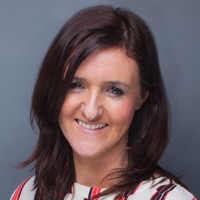
In addition, the take-up of longer-term fixed rates has increased, with the LMS reporting in April that five-year fixed rates accounted for 53 per cent of remortgage transactions in April this year.
Product transfers in the fourth quarter last year were four times higher than remortgage transactions, with product transfers accounting for £168.3bn of borrowing last year.
This fundamental shift away from traditional remortgage activity means advisers will need to consider how they adapt their business models to meet the changing preferences of borrowers.
The issue of client retention should be front and centre of brokerage businesses heavily reliant on the remortgage market.
Advice gap for borrowers with additional needs
However, with a high percentage of these product transfers completing on an execution-only basis, there is an advice gap for those borrowers who may have additional borrowing needs, which could be met via a second charge.
One of the advantages of including second charges within the advice process is that borrowers can continue to benefit from product transfers and still address their immediate or future borrowing needs via a second mortgage.
The blended rate often comes out cheaper than the alternative of remortgaging away from a high street mortgage provider to a specialist lender.
Most second charge lenders also offer a bespoke approach to underwriting considering the individual circumstance of the borrower. This is important for borrowers who have been subject to one-off life events which may have temporarily affected their credit score.
Rise in five-year fixed rates
In addition to the increased popularity of product transfers, there has been an increased take up of five-year fixed rates in recent years. With the prospect of increased inflation, it is expected that interest rates will increase in the near future so this trend is likely to continue.
Five-year fixed rates are likely to carry early repayment charges for the duration of the fixed rate term. Therefore, brokers offering second charges will have the opportunity to revisit their clients’ financial needs enabling further finance to be raised without incurring redemption charges.
Advice options for brokers
Mortgage brokers have a variety of options when it comes to second charge advice. Second charge rates are included in a number of mortgage sourcing systems providing advisers with the opportunity to upskill their knowledge of the seconds market.
Alternatively, brokers can outsource the advice and processing of the loan application to a specialist second charge broker firm. This would still enable advisers to include seconds as an option alleviating any concerns over increased compliance burdens or issues around operational resource.
Second charges could play an increasingly important role for mortgage brokers who are seeing more borrowers take up product transfers or longer-term fixed rate products. They provide new ways for broker firms to engage with their customer base as well as providing a range of new product options to address a wider range of borrowing needs.
It really is time to think differently about second charges.













